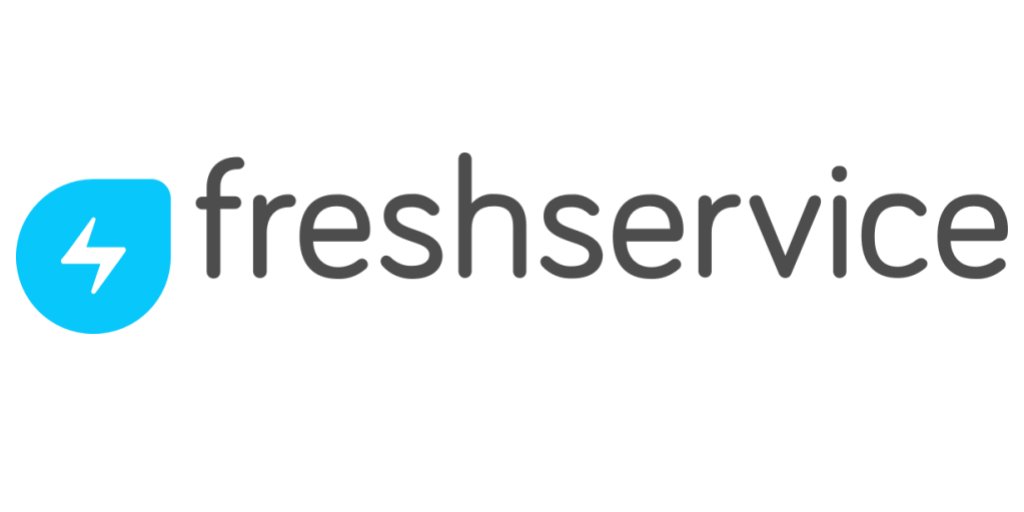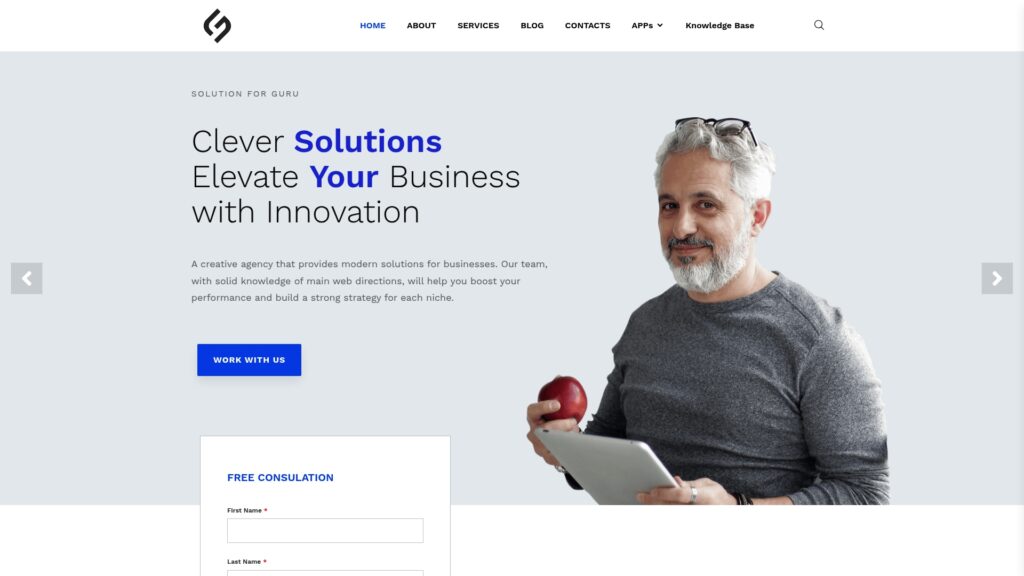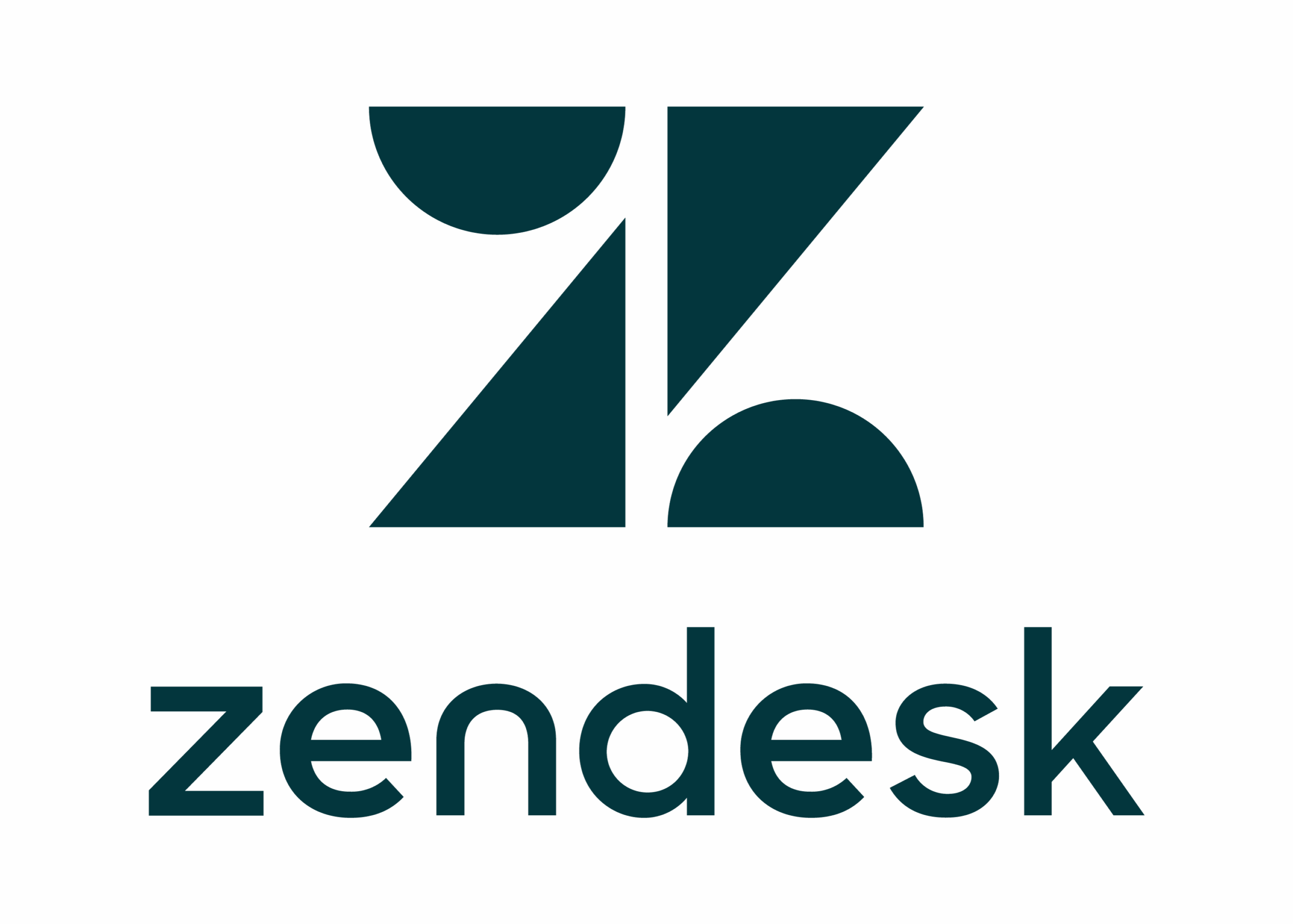How Cloud and DevOps Are Transforming ITSM Practices?

The digital transformation landscape continues to evolve at an unprecedented pace, fundamentally reshaping how organizations manage their IT services. Traditional IT Service Management (ITSM) practices, once characterized by rigid processes and siloed operations, are undergoing a remarkable metamorphosis driven by cloud computing and DevOps methodologies. This transformation is not merely a technological upgrade but represents a cultural and operational paradigm shift that enables businesses to deliver services with greater agility, efficiency, and customer-centricity. As organizations navigate this complex journey, understanding the convergence of cloud technologies, DevOps practices, and modern ITSM frameworks becomes essential for maintaining competitive advantage in today’s fast-paced digital economy.
Table of Contents
- Quick Summary
- What Are Cloud, DevOps, and ITSM, and How Do They Interconnect?
- How Are Leading ITSM Platforms Enabling This Transformation?
- Why Is Cloud Computing Revolutionizing Traditional ITSM?
- How Does DevOps Challenge and Enhance ITSM Frameworks?
- What Are the Key Benefits of Integrating Cloud and DevOps with ITSM?
- What Does the Future Hold for ITSM in the Cloud-DevOps Era?
- Summing up
- Frequently Asked Questions
- Why Partner with Solution for Guru for Your ITSM Transformation?
Quick Summary
The convergence of cloud computing and DevOps practices is fundamentally transforming IT Service Management by breaking down traditional silos, accelerating service delivery, and enabling continuous improvement. Cloud technologies provide the scalable, flexible infrastructure that modern businesses require, while DevOps methodologies foster collaboration, automation, and rapid iteration. Together, they are reshaping ITSM from a reactive, ticket-based approach to a proactive, customer-focused service delivery model.
Modern ITSM platforms like Freshservice, ManageEngine, and Zendesk have evolved to support this transformation by offering cloud-native architectures, automation capabilities, and seamless integrations with DevOps toolchains. These solutions enable organizations to implement self-service portals, automate routine tasks, and gain real-time visibility into service performance across hybrid environments.
Furthermore, this transformation delivers tangible business value through reduced operational costs, improved service quality, faster time-to-market for new services, and enhanced customer satisfaction. Organizations that successfully navigate this journey position themselves to respond more effectively to changing business requirements and competitive pressures.
What Are Cloud, DevOps, and ITSM, and How Do They Interconnect?
Understanding Cloud Computing in the ITSM Context
Cloud computing represents a paradigm shift in how IT resources are provisioned, managed, and consumed. Rather than maintaining physical infrastructure on-premises, organizations leverage cloud service models—Infrastructure as a Service (IaaS), Platform as a Service (PaaS), and Software as a Service (SaaS)—to access computing resources on-demand. This fundamental change has profound implications for ITSM practices.
Traditional ITSM frameworks were designed around predictable, controlled environments where change was carefully managed and infrequent. However, cloud environments are inherently dynamic, with resources scaling automatically, services updating continuously, and infrastructure changes occurring programmatically. Consequently, ITSM practices must adapt to manage this increased velocity and complexity while maintaining service quality and compliance.
Moreover, cloud computing introduces new service management challenges including multi-cloud governance, cloud cost optimization, security across distributed environments, and integration between cloud and on-premises systems. These requirements demand that ITSM evolves beyond traditional incident and change management to encompass cloud-specific capabilities such as automated provisioning, policy-driven governance, and real-time performance analytics.
Defining DevOps and Its Core Principles
DevOps represents a cultural and technical movement that emphasizes collaboration between development and operations teams, automation of repetitive tasks, and continuous delivery of value to customers. The core principles of DevOps include continuous integration and continuous delivery (CI/CD), infrastructure as code (IaC), automated testing, monitoring and feedback loops, and cross-functional team structures.
Unlike traditional IT operations that often operated in reactive mode, DevOps promotes a proactive approach where teams anticipate issues, automate responses, and continuously improve processes. This philosophy directly challenges some conventional ITSM practices, particularly around change management, where traditional approval processes can create bottlenecks that contradict DevOps’s emphasis on speed and agility.
Nevertheless, DevOps and ITSM are not mutually exclusive; rather, they complement each other when properly integrated. DevOps provides the technical practices and cultural mindset for rapid delivery, while ITSM offers governance frameworks, service quality standards, and customer-focused processes. The key lies in adapting ITSM practices to support rather than hinder DevOps velocity.
The Traditional ITSM Framework
IT Service Management, as codified in frameworks like ITIL (Information Technology Infrastructure Library), provides structured approaches for delivering and supporting IT services. Traditional ITSM encompasses various processes including incident management, problem management, change management, service request fulfillment, knowledge management, and service level management.
These frameworks emerged during an era when IT changes were infrequent, infrastructure was predominantly on-premises, and waterfall development methodologies dominated. The emphasis was on stability, control, and risk mitigation through formal processes and approval hierarchies. While these attributes remain important, they must be balanced with the need for agility and rapid innovation in today’s business environment.
The Interconnection: Creating Synergy
The interconnection between cloud, DevOps, and ITSM creates a powerful synergy that transforms service delivery. Cloud provides the flexible infrastructure foundation, DevOps supplies the cultural and technical practices for rapid delivery, and ITSM offers the governance and service quality frameworks. When these elements align, organizations achieve what is often called “DevOps-enhanced ITSM” or “modern ITSM.”
This integrated approach manifests in several ways. For instance, infrastructure as code enables change management to be partially automated while maintaining audit trails and compliance. Cloud-native architectures support the rapid experimentation and rollback capabilities that DevOps teams require. ITSM platforms provide the visibility and governance that ensure DevOps practices don’t compromise service quality or security.
How Are Leading ITSM Platforms Enabling This Transformation?
Freshservice: Cloud-Native ITSM for Modern Teams

Freshservice has positioned itself as a cloud-native ITSM solution designed specifically for the modern IT environment. Built on the Freshworks SaaS platform, Freshservice offers intuitive interfaces, powerful automation capabilities, and seamless integration with DevOps tools and cloud platforms. Its architecture reflects an understanding that ITSM must adapt to support agile methodologies and distributed teams.
One of Freshservice’s key strengths in supporting cloud-DevOps transformation is its emphasis on automation and self-service. The platform includes powerful workflow automation capabilities. It can integrate seamlessly with CI/CD pipelines. When deployments fail, it can automatically create incidents. It can also trigger change requests based on code commits. This automation reduces manual overhead while maintaining the visibility and governance that ITSM provides.
Additionally, Freshservice offers robust integration capabilities with popular DevOps tools such as Jenkins, GitLab, and Azure DevOps. These integrations enable bidirectional data flow, so development teams can see service desk tickets related to their code, while operations teams gain visibility into upcoming deployments. The platform also provides AI-powered capabilities for ticket routing, knowledge base suggestions, and predictive analytics. It’s helps organizations move from reactive to proactive service management.
Furthermore, Freshservice’s cloud-native architecture means organizations benefit from continuous updates, scalable infrastructure, and global accessibility without managing underlying systems. This aligns perfectly with cloud-first strategies and reduces the operational burden on IT teams, allowing them to focus on value-added activities rather than platform maintenance.
ManageEngine: Comprehensive ITSM for Hybrid Environments

ManageEngine offers a comprehensive suite of ITSM solutions through its ServiceDesk Plus platform, which caters to organizations at various stages of cloud and DevOps adoption. Unlike purely cloud-native solutions, ManageEngine provides deployment flexibility with both on-premises and cloud options, making it particularly suitable for enterprises with hybrid IT environments or specific regulatory requirements.
ManageEngine’s approach to supporting cloud-DevOps transformation focuses on providing deep integration capabilities and extensive customization options. The platform includes pre-built integrations with major cloud providers like AWS, Azure, and Google Cloud Platform, enabling automated discovery of cloud resources, cost tracking, and unified service management across hybrid environments. This is particularly valuable for organizations managing complex multi-cloud architectures alongside traditional infrastructure.
In terms of DevOps enablement, ManageEngine offers integration with popular DevOps toolchains and supports automated workflows that align with continuous delivery practices. The platform’s change management module can be configured to support both traditional approval-heavy processes and streamlined DevOps workflows, allowing organizations to apply appropriate governance based on change risk and type. This flexibility helps bridge the gap between traditional ITSM practices and modern DevOps requirements.
Moreover, ManageEngine provides robust analytics and reporting capabilities that give organizations visibility across their entire IT ecosystem. These insights are crucial for understanding the impact of cloud migration and DevOps adoption on service quality, identifying optimization opportunities, and demonstrating business value. The platform also includes asset management features that extend to cloud resources, helping organizations maintain inventory accuracy and optimize cloud spending.
Zendesk: Customer-Centric Service Management

Zendesk, traditionally known for customer service and support, has expanded its capabilities to address IT service management needs through its Zendesk Suite and related products. The platform’s strength lies in its customer-centric approach, which aligns well with the service-oriented philosophy that modern ITSM seeks to embody. By applying customer service best practices to IT support, Zendesk helps organizations create more intuitive, user-friendly service experiences.
Zendesk’s cloud-native architecture and omnichannel capabilities make it particularly effective for organizations embracing digital transformation. The platform enables IT teams to support users across multiple channels—email, chat, phone, self-service portals, and even social media—providing flexibility that matches how modern employees prefer to engage with IT services. This multi-channel approach is essential in today’s distributed work environments where users expect consumer-grade experiences from internal IT services.
In supporting DevOps practices, Zendesk offers APIs and integration frameworks that enable connectivity with development and operations tools. While not as deeply focused on traditional ITSM processes as Freshservice or ManageEngine, Zendesk excels in creating seamless experiences for end users and providing visibility into service performance. The platform’s ticketing system can be integrated into DevOps pipelines to automatically create support tickets for deployment issues or service degradations.
Additionally, Zendesk’s emphasis on knowledge management and self-service aligns perfectly with DevOps principles of autonomy and empowerment. By creating comprehensive knowledge bases and enabling users to solve problems independently, organizations reduce ticket volumes and free IT teams to focus on more strategic initiatives. The platform’s analytics capabilities also provide insights into user satisfaction and service trends, helping organizations continuously improve their service delivery.
Cloud Integration Capabilities
DevOps Integration & Automation
Why Is Cloud Computing Revolutionizing Traditional ITSM?
Infrastructure Elasticity and Dynamic Resource Management
Cloud computing fundamentally changes how organizations manage IT resources by introducing unprecedented elasticity and flexibility. Traditional ITSM was designed around relatively static infrastructure where capacity planning involved lengthy procurement cycles and infrastructure changes required careful coordination. In contrast, cloud environments enable resources to scale automatically based on demand, applications to be deployed in minutes rather than weeks, and infrastructure configurations to be modified programmatically.
This elasticity challenges traditional ITSM processes, particularly asset management and capacity management. IT teams can no longer rely on static configuration management databases (CMDBs) that are manually updated periodically. Instead, they require dynamic, automatically updated asset inventories that reflect the current state of cloud resources. Platforms like Freshservice, ManageEngine, and Zendesk have evolved to support this requirement through automated discovery, API integrations with cloud providers, and real-time asset tracking.
Moreover, the ability to provision resources on-demand shifts the role of IT from gatekeeper to enabler. Rather than controlling a scarce resource, IT teams facilitate self-service access to cloud resources while implementing guardrails through policy and automation. This shift requires ITSM processes to evolve from approval-focused to governance-focused, ensuring compliance and cost optimization without impeding business agility.
Service Delivery Speed and Agility
Cloud computing enables organizations to deliver new services and capabilities with unprecedented speed. What previously required months of hardware procurement, installation, and configuration can now be accomplished in hours through cloud provisioning. This acceleration has profound implications for how ITSM manages service introduction, change management, and service catalog offerings.
Traditional change management processes, with their emphasis on change advisory boards (CABs) and extensive approval cycles, can become bottlenecks in cloud environments where changes occur continuously. Consequently, modern ITSM must adopt risk-based change management that applies appropriate scrutiny based on change impact rather than treating all changes equally. Standard changes can be pre-approved and automated, while only high-risk changes require detailed review.
Freshservice and ManageEngine address this challenge by offering configurable change workflows that can be tailored to different change types. Low-risk, frequently performed changes can be automated and tracked without requiring manual approvals, while maintaining audit trails for compliance. This approach balances the need for governance with the agility that cloud environments enable.
Cost Optimization and Financial Management
Cloud computing introduces a new paradigm of consumption-based pricing where organizations pay for resources as they use them rather than making large upfront capital investments. While this model offers significant advantages in terms of financial flexibility, it also creates new management challenges around cost visibility, optimization, and chargeback or showback.
ITSM platforms must evolve to incorporate financial management capabilities that track cloud spending, allocate costs to appropriate business units or projects, and identify optimization opportunities. This requires integration with cloud provider billing APIs, sophisticated reporting capabilities, and often, machine learning algorithms that can identify anomalous spending patterns or underutilized resources.
ManageEngine particularly excels in this area with comprehensive asset and cloud management features that provide visibility into resource utilization and costs across hybrid environments. By integrating financial management into ITSM platforms, organizations can ensure that service management encompasses not just operational performance but also financial efficiency.
Multi-Cloud and Hybrid Complexity
Many organizations adopt multi-cloud strategies, utilizing services from multiple cloud providers alongside on-premises infrastructure to avoid vendor lock-in, optimize costs, or meet specific technical requirements. However, this approach introduces significant complexity for service management, as IT teams must maintain visibility and control across diverse environments with different management interfaces, APIs, and service models.
Modern ITSM platforms address this challenge by providing unified management capabilities that abstract underlying infrastructure differences. Through integrations with major cloud providers and standardized data models, platforms like Freshservice, ManageEngine, and Zendesk enable IT teams to manage incidents, changes, and service requests consistently regardless of where the underlying resources reside.
Furthermore, hybrid and multi-cloud environments require sophisticated orchestration capabilities to coordinate processes across platforms. For example, provisioning a new application might require creating resources in AWS, configuring networking in Azure, etc. ITSM platforms increasingly incorporate or integrate with orchestration tools to automate these complex workflows while maintaining appropriate governance and documentation.
How Does DevOps Challenge and Enhance ITSM Frameworks?

The Speed Versus Control Paradox
DevOps emphasizes rapid delivery, continuous improvement, and minimal barriers between developers and production environments. Traditional ITSM, conversely, prioritizes stability, risk management, and controlled change processes. This apparent tension represents one of the most significant challenges in integrating DevOps with ITSM frameworks. However, this perceived conflict often stems from misunderstanding rather than fundamental incompatibility.
The key to resolving this paradox lies in recognizing that speed and control are not mutually exclusive. DevOps practices like automated testing, continuous integration, and infrastructure as code actually enhance control by making changes more predictable, repeatable, and traceable. Rather than relying on manual reviews and approvals to catch issues, these practices build quality and compliance into the development and deployment process itself.
Modern ITSM platforms like Freshservice support this integration by enabling automated change management workflows that can be triggered directly from CI/CD pipelines. When a deployment passes all automated tests and meets predefined criteria, the change can be automatically approved and documented without manual intervention. This approach maintains the audit trail and governance that ITSM provides while removing bottlenecks that impede DevOps velocity.
Continuous Delivery and Change Management
Continuous delivery, a core DevOps practice, involves deploying small changes to production frequently—sometimes multiple times per day. This approach contradicts traditional change management, which treats each change as a distinct event requiring individual assessment and approval. Organizations implementing DevOps must fundamentally rethink how they approach change management.
The solution involves adopting tiered change management approaches that differentiate between standard, normal, and emergency changes. Standard changes that are low-risk, well-understood, and frequently performed can be pre-approved and automated. Normal changes that introduce more risk require assessment but can be streamlined through efficient workflows. Emergency changes receive expedited handling when necessary.
ManageEngine facilitates this approach by providing flexible change management workflows that can be customized based on change characteristics. Organizations can configure automated approval paths for standard changes while maintaining more rigorous processes for higher-risk modifications. This flexibility enables DevOps teams to maintain their delivery cadence while ensuring appropriate governance.
Infrastructure as Code and Configuration Management
Infrastructure as Code (IaC) represents a paradigm shift in how infrastructure is managed and deployed. Rather than manually configuring servers and network devices, infrastructure configurations are defined in code, version-controlled, and deployed through automated processes. This approach brings software development practices to infrastructure management and has profound implications for ITSM.
Traditional configuration management databases (CMDBs) often struggled with accuracy because they required manual updates whenever infrastructure changed. With IaC, infrastructure configurations exist as code in version control systems, providing an always-accurate, version-controlled record of infrastructure state. This transforms the CMDB from a manually maintained inventory into a dynamic view derived from authoritative sources.
ITSM platforms increasingly integrate with IaC tools like Terraform, Ansible, and CloudFormation to automatically discover and track infrastructure changes. Freshservice and ManageEngine offer integration capabilities that enable synchronization between IaC repositories and configuration management systems. This integration bridges DevOps practices with ITSM requirements for accurate configuration information.
Collaborative Culture and Breaking Down Silos
Perhaps DevOps’s most significant impact on ITSM is cultural rather than technical. DevOps emphasizes cross-functional collaboration, shared responsibility, and collective ownership of service quality. This contrasts with traditional IT organizations where development, operations, and support teams often operated in silos with limited communication and sometimes conflicting objectives.
Modern ITSM must support this collaborative culture by providing tools and processes that facilitate communication, shared visibility, and collective problem-solving. Rather than treating incidents as operations problems to be fixed reactively, DevOps-enhanced ITSM encourages development teams to participate in incident response and learn from production issues to prevent recurrence.
Platforms like Zendesk and Freshservice support collaboration through features like shared ticket queues, real-time commenting, and integration with communication tools like Slack and Microsoft Teams. These capabilities ensure that the right people can quickly come together to resolve issues regardless of organizational boundaries. By facilitating collaboration, modern ITSM platforms help organizations realize the cultural benefits of DevOps.
What Are the Key Benefits of Integrating Cloud and DevOps with ITSM?
Accelerated Service Delivery and Time-to-Market
One of the most compelling benefits of integrating cloud and DevOps with ITSM is dramatically accelerated service delivery. Organizations report reducing deployment times from months to days or even hours by leveraging cloud infrastructure, automating processes, and streamlining governance. This acceleration enables businesses to respond more quickly to market opportunities, competitive pressures, and customer needs.
Traditional ITSM processes often introduced delays through manual approvals, lengthy testing cycles, and sequential handoffs between teams. By automating routine tasks, implementing continuous integration and deployment, and adopting risk-based change management, organizations can eliminate these bottlenecks while maintaining service quality and compliance. This acceleration doesn’t mean compromising on governance. Rather, it means embedding governance into automated processes rather than relying on manual checkpoints.
| Traditional Approach | Cloud-DevOps-ITSM Integrated Approach |
|---|---|
| Manual infrastructure provisioning (weeks) | Automated provisioning via cloud (minutes) |
| Sequential development and operations handoffs | Continuous collaboration and feedback |
| Periodic, large releases | Frequent, incremental updates |
| Manual testing and validation | Automated testing in CI/CD pipelines |
| Change Advisory Board approval for all changes | Risk-based, tiered change management |
| Reactive incident management | Proactive monitoring and prevention |
Solutions like Freshservice, ManageEngine, and Zendesk enable this acceleration by providing automation capabilities, workflow engines, and integrations with DevOps toolchains. Organizations implementing these platforms report significant improvements in key metrics such as mean time to deploy, deployment frequency, and time from development completion to production release.
Enhanced Service Quality and Reliability
Contrary to concerns that increased delivery speed might compromise quality, organizations implementing DevOps practices alongside robust ITSM typically experience improved service reliability. This improvement stems from several factors including smaller, incremental changes that are easier to test and less likely to cause widespread issues, automated testing that catches defects before production, continuous monitoring that enables rapid issue detection, and learning cultures that systematically improve processes.
DevOps practices like continuous integration ensure that code changes are automatically tested whenever they’re committed, catching integration issues immediately rather than during infrequent, large-scale integration efforts. Infrastructure as code enables consistent, repeatable deployments that eliminate configuration drift and manual errors. Automated rollback capabilities allow teams to quickly revert problematic changes, minimizing user impact.
ITSM platforms enhance these capabilities by providing comprehensive incident management, problem management, and knowledge management processes. When issues do occur, platforms like ManageEngine and Freshservice enable rapid response through automated alerting, intelligent ticket routing, and knowledge base integration. Post-incident reviews captured in ITSM systems inform continuous improvement efforts, creating a virtuous cycle of increasing reliability.
Improved Operational Efficiency and Cost Reduction
Integrating cloud, DevOps, and ITSM delivers significant operational efficiency gains through automation, self-service, and optimized resource utilization. Organizations report reducing manual effort for routine tasks by 50-70% through automation, freeing IT staff to focus on higher-value activities like innovation, strategic planning, and complex problem-solving.
Cloud computing contributes to efficiency by eliminating the overhead of managing physical infrastructure, enabling precise capacity matching to actual demand, and providing consumption-based pricing that aligns costs with usage. DevOps practices reduce waste through faster feedback loops, earlier defect detection, and automated processes that eliminate manual errors and rework.
Modern ITSM platforms maximize these efficiency gains by automating ticket routing, providing self-service capabilities that enable users to resolve issues independently, and offering analytics that identify optimization opportunities. Freshservice and Zendesk, for instance, provide AI-powered capabilities that automatically suggest solutions based on historical tickets, reducing resolution time and support burden.
Better Customer and Employee Experience
The ultimate objective of ITSM is delivering value to users, and the integration of cloud, DevOps, and modern ITSM significantly enhances both customer and employee experiences. Users benefit from faster service delivery, more reliable services, intuitive self-service portals, and proactive issue prevention. These improvements translate directly into higher satisfaction, productivity, and business outcomes.
Cloud-native ITSM platforms like Freshservice, ManageEngine, and Zendesk provide user-friendly interfaces that reflect modern design principles and consumer-grade experiences. Self-service portals enable users to request services, track issues, and find solutions independently without waiting for support staff. Mobile accessibility ensures users can engage with IT services from any device, anywhere.
Furthermore, the transparency and communication enabled by modern ITSM platforms improve user confidence and satisfaction even when issues occur. Real-time status updates, proactive notifications about known issues, and clear communication about resolution progress help users feel informed and valued. This transparency, combined with genuinely faster resolution enabled by automation and collaboration, creates positive service experiences that drive organizational adoption and satisfaction.
Data-Driven Decision Making and Continuous Improvement
Integrating cloud, DevOps, and ITSM creates comprehensive visibility into service delivery and operations, enabling data-driven decision making and continuous improvement. Modern ITSM platforms collect metrics across the entire service lifecycle, from development through production support, providing insights that were previously unavailable or required significant manual effort to compile.
These insights enable organizations to identify trends, predict issues before they impact users, allocate resources effectively, and measure the business impact of IT services. For example, by correlating deployment frequency with incident rates, organizations can assess whether their DevOps practices are improving or compromising stability. By analyzing ticket patterns, they can identify recurring issues that warrant problem management attention.
ManageEngine and Freshservice provide robust analytics and reporting capabilities that transform raw data into actionable insights. Dashboards present real-time views of key performance indicators, while customizable reports enable deep dives into specific areas. These capabilities support both operational management and strategic planning, ensuring that IT services continuously evolve to meet business needs.
What Does the Future Hold for ITSM in the Cloud-DevOps Era?

Artificial Intelligence and Machine Learning Integration
The future of ITSM will be significantly shaped by artificial intelligence (AI) and machine learning (ML) technologies that enable more intelligent, proactive, and autonomous service management. These technologies are already emerging in modern ITSM platforms and will become increasingly sophisticated and impactful. AI-powered capabilities include intelligent ticket routing and categorization, predictive analytics for capacity planning and problem prevention, natural language processing for chatbots and virtual agents, automated root cause analysis, and anomaly detection in system behavior.
Freshservice and ManageEngine already incorporate AI features like automated ticket classification and knowledge base suggestions. Future developments will expand these capabilities to provide truly predictive and prescriptive recommendations. For example, ML algorithms might analyze historical data to predict when specific components will fail, automatically triggering preventive maintenance before service disruptions occur.
Moreover, AI will enable more sophisticated automation that adapts to changing conditions rather than following rigid rules. Virtual agents will handle increasingly complex service requests through natural conversations, while ML algorithms continuously optimize workflows based on outcomes. This evolution will free human IT staff to focus on strategic initiatives, complex problems, and human-centered activities that machines cannot replicate.
AIOps and Intelligent Operations
AIOps (Artificial Intelligence for IT Operations) represents a significant evolution in how organizations manage complex IT environments. Also, AIOps platforms use big data, machine learning, and automation to enhance IT operations by aggregating data from multiple sources, identifying patterns and correlations that humans might miss, predicting issues before they impact users, and automating responses to known problems.
The integration of AIOps with ITSM platforms like Freshservice, ManageEngine, and Zendesk will create more intelligent, self-healing IT environments. When AIOps detects an anomaly, it can automatically create incidents in the ITSM platform, apply known remediation procedures, and notify relevant teams if human intervention is needed. This integration bridges monitoring, automation, and service management into cohesive operational frameworks.
Furthermore, AIOps will enhance problem management by analyzing incident patterns across time to identify underlying systemic issues. Rather than treating each incident in isolation, organizations will gain insights into root causes affecting multiple incidents, enabling more effective and lasting solutions. This capability is particularly valuable in complex cloud and hybrid environments where understanding relationships between components can be challenging.
Edge Computing and Distributed Service Management
Edge computing, which processes data closer to where it’s generated rather than in centralized data centers, presents new challenges and opportunities for ITSM. As organizations deploy applications and infrastructure to edge locations – whether retail stores, manufacturing facilities, or IoT devices—service management must extend to these distributed environments while maintaining consistent governance and user experience.
ITSM platforms will need to support distributed architectures where service management functions can operate at edge locations with intermittent connectivity to central systems. This requirement calls for a new set of capabilities. First, local automation must be able to function even without constant cloud connectivity. Next, synchronization mechanisms are needed to reconcile data once the connection is restored. Finally, edge-specific monitoring and management tools are essential to maintain visibility and control in these environments.
ManageEngine and other ITSM vendors are developing capabilities to manage edge environments alongside traditional and cloud infrastructure. These developments will enable organizations to maintain service quality and visibility regardless of where infrastructure resides, supporting business models that require distributed computing capabilities.
Summing up
The transformation of IT Service Management through cloud computing and DevOps represents far more than a technological upgrade – it embodies a fundamental reimagining of how organizations deliver and manage IT services. Throughout this exploration, several key themes emerge that illuminate the path forward for organizations navigating this complex but essential journey.
First and foremost, the integration of cloud, DevOps, and ITSM is not about abandoning proven service management principles but rather adapting them to support modern business requirements. The core objectives of ITSM – delivering reliable, cost-effective services that create business value – remain constant. However, the methods for achieving these objectives must evolve to accommodate the speed, scale, and complexity of contemporary IT environments. Organizations that successfully balance stability with agility, control with speed, and governance with autonomy position themselves for sustained competitive advantage.
Modern ITSM platforms play a crucial role in enabling this transformation. Solutions like Freshservice provide cloud-native architectures and intuitive interfaces that make modern service management accessible to organizations of all sizes. ManageEngine offers comprehensive capabilities and deployment flexibility that support complex, hybrid environments while providing robust integration and analytics. Zendesk brings customer-centric approaches to IT service management, creating user experiences that meet the expectations of modern employees accustomed to consumer-grade digital services. These platforms serve not merely as ticketing systems but as foundational enablers of service delivery transformation.
The benefits of successfully integrating cloud, DevOps, and ITSM are substantial and multifaceted. Organizations realize faster time to market for new services and capabilities, improved service reliability through automation and continuous improvement, enhanced operational efficiency that reduces costs and frees resources for innovation, better experiences for both customers and employees, and data-driven insights that inform strategic decision-making. These benefits compound over time as organizations mature their practices and capabilities.
Frequently Asked Questions
Traditional ITSM frameworks like ITIL are evolving to accommodate DevOps practices through several key adaptations. Rather than viewing DevOps and ITIL as competing philosophies, forward-thinking organizations recognize them as complementary approaches that, when properly integrated, deliver superior outcomes. The latest versions of ITIL explicitly acknowledge DevOps and agile methodologies, providing guidance on how to adapt traditional processes for modern environments.
Specifically, change management has evolved from treating all changes equally to implementing tiered, risk-based approaches. Standard changes that are low-risk and frequently performed can be pre-approved and automated, while higher-risk changes receive appropriate scrutiny. This adaptation maintains governance while removing bottlenecks that impede DevOps velocity. Similarly, incident and problem management increasingly incorporate DevOps practices like blameless post-mortems and continuous improvement, creating learning cultures rather than punitive environments.
Measuring transformation success requires balanced scorecards that capture multiple dimensions of performance rather than relying on single metrics. Effective measurement typically encompasses four key categories, each providing different but complementary perspectives on transformation impact.
First, operational efficiency metrics measure how effectively IT delivers services. These include mean time to resolution (MTTR) for incidents, first-contact resolution rates, deployment frequency, lead time for changes, and automation rates. These metrics indicate whether transformation is delivering the efficiency gains expected. Second, service quality metrics assess reliability and stability, including service availability percentages, change failure rates, mean time to recovery (MTTR), and defect escape rates. These metrics ensure that increased speed doesn’t compromise quality.
Third, business value metrics connect IT performance to business outcomes, encompassing time to market for new capabilities, operational cost reductions, revenue impact from IT-enabled initiatives, and return on investment for transformation initiatives.
Why Partner with Solution for Guru for Your ITSM Transformation?
Navigating the complex landscape of cloud computing, DevOps practices, and modern ITSM requires expertise, experience, and strategic vision. While the benefits of transformation are substantial, the journey presents numerous challenges that can derail initiatives or delay realization of expected value. This is where partnering with experienced specialists becomes invaluable.

Whether you’re just beginning your ITSM transformation journey or seeking to optimize existing implementations, Solution for Guru provides the partnership, expertise, and support needed to achieve your objectives efficiently and effectively. Their client-focused approach ensures that solutions align with business goals, deliver measurable value, and position organizations for long-term success in the cloud-DevOps era.
Visit https://www.solution4guru.com/ to learn more about how Solution for Guru can help your organization transform its ITSM practices and realize the full benefits of cloud computing and DevOps integration.
Recommended:
- ITSM Change Management
- ITSM Integration: Streamlining IT Service Management for Modern Enterprises
- ITSM Problem Management
- What Are ITSM Ticketing Tools?
- ITSM Jobs: Your Guide to a Thriving Career in IT Service Management
- Why are ITSM Best Practices essential?
- What is an IT Management Service Provider?
- Comprehensive Guide to ITSM Tools: Features, Benefits, and Top Solutions
- What is IT Service Management (ITSM)?




